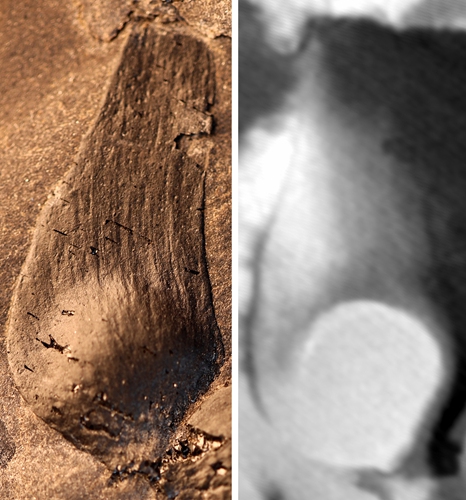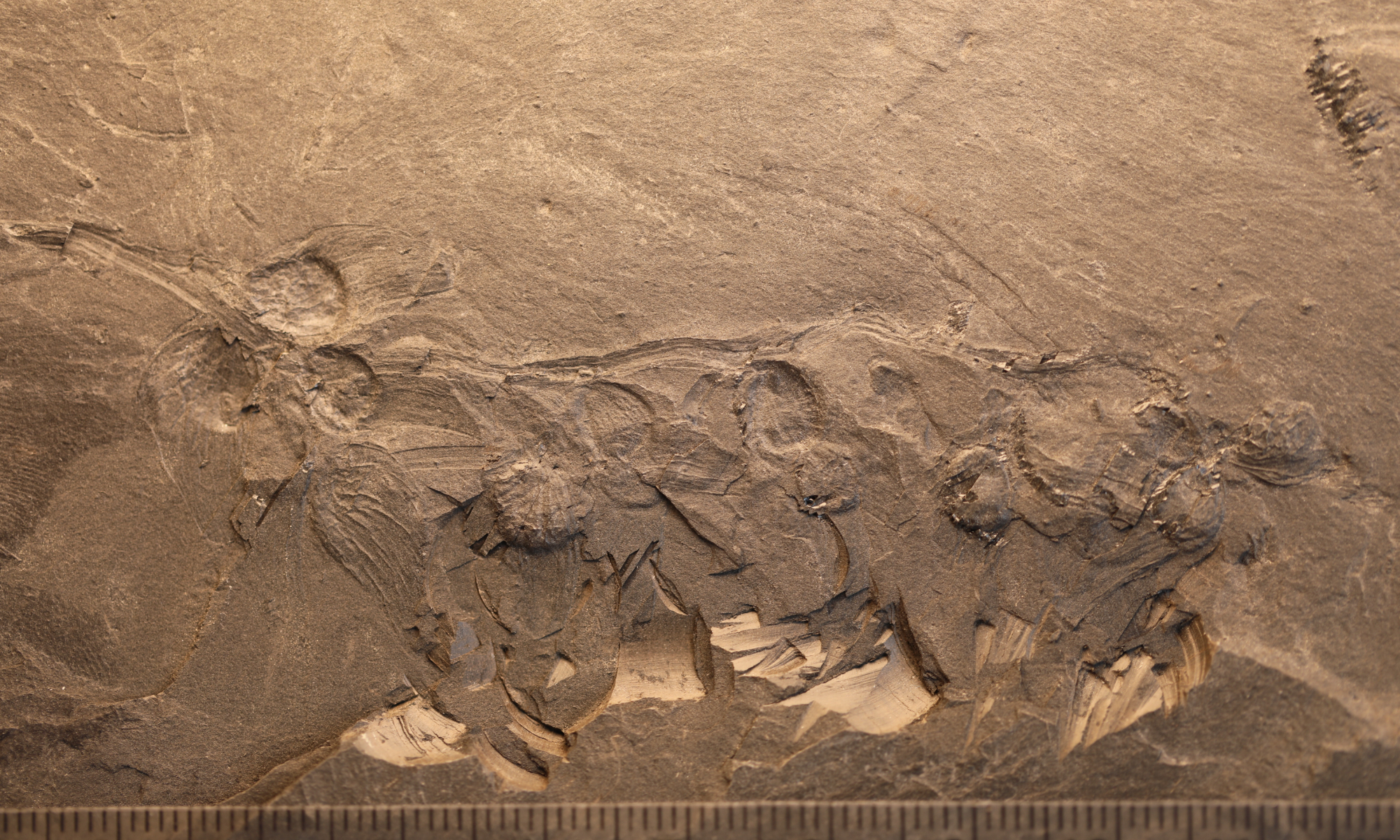
Fruits of Qingganninginfructus formosa and contained seeds Photo: Courtesy of the Nanjing Institute of Geology and Palaeontology, Chinese Academy of Sciences
Chinese researchers have found fossils of an ancient plant dating back to about 170 million years ago.
The Nanjing Institute of Geology and Palaeontology, Chinese Academy of Sciences recently announced they had discovered the earliest angiosperm known in Northwest China through reexamination of fossil specimens.

Qingganninginfructus formosa fossil Photo: Courtesy of the Nanjing Institute of Geology and Palaeontology, Chinese Academy of Sciences
The researcher in charge of the study Wang Xin told the Global Times that the fossils represent inflorescences or infructescences belonging to angiosperms. Angiosperms are the most evolved, diverse, widely distributed and adaptable group of plants today. “There are over 300,000 species of angiosperms in the extant world.” He added.
The research team reexamined a Jurassic fossil plant from about 170 million years ago in the Northwest of China. The plant was previously thought to be a gymnosperm, and named as Drepanolepis formosa Zhang, 1998.
In the latest study, the team applied micro-CT technology to scan the fossil specimens and found that an inverted ovule with two integuments is enclosed in each carpel or fruit, which is a key feature for determining angiosperms, and they named the fossil plant as Qingganninginfructus formosa.
“Qingganninginfructus formosa is found in large quantities in a wide area in Northwest China, including Qinghai, Gansu and Ningxia. The fossil plant represents the earliest record of angiosperms in Northwest China. Its discovery indicates that angiosperms emerged and were widely distributed as early as about 170 million years ago, that is, during the Middle Jurassic, and reached a certain degree of prosperity. It also provides a new reference basis for the scientific community to continue to trace the origin and evolution of angiosperms.” Wang told the Global Times on Tuesday.
The study was jointly worked on by Nanjing Institute of Geology and Palaeontology, Chinese Academy of Sciences, Lanzhou University, Ningxia Geological Museum and Northwest University. The related research results were recently published in Life, an international biological periodical.
